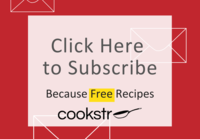
This image courtesy of Shutterstock
You’ll be amazed by how much fresh spinach goes into this spanakopita. Choose spinach with bright, full leaves because that’s the flavor underlying the fresh dill, fresh parsley, and feta cheese.
The feta is the other flavor you’ll want to choose with care. I think French feta cheeses are too mild-and don’t even get me started on Danish fetas, which are made with cow’s milk and taste altogether different from Greek feta. Go to a cheese market and taste Greek fetas. Choose a feta with some flavor; a delicate cheese will be lost beneath the spinach and dill.
Rice in a spanakopita is somewhat unusual, but just a little rice, toasted lightly in olive oil, adds wonderful texture to the filling.
Don’t hesitate to make this even if you’re cooking just for two or four people. It keeps well refrigerated for several days, and actually packs up nicely for brown-bag lunches.
See “Tips for Handling Phyllo Dough” in Notes before you begin this recipe.
Recipe CourseMain Course, Side Dish
Dietary ConsiderationEgg-free, Halal, Kosher, Peanut Free, Soy Free, Tree Nut Free, Vegetarian
Taste and TextureCheesy, Crisp, Salty, Savory
Ingredients
- ½ cup extra virgin olive oil, plus extra for greasing and brushing
- 6 cups chopped yellow onions
- ¾ cup uncooked long-grain white rice
- 4½ pounds fresh spinach, tough stems removed
- 2¼ teaspoons kosher salt
- 3 scallions, white and tender green parts, chopped
- ¾ cup finely chopped fresh Italian flat-leaf parsley
- ¼ cup plus 2 tablespoons finely chopped fresh dill
- 1½ cups crumbled feta cheese
- ½ teaspoon freshly ground black pepper
- 1 pound phyllo dough (20-24 sheets)
Instructions
-
Preheat the oven to 350°F.
-
Heat the ½ cup olive oil in a stockpot over medium-high heat. Add the onions and sauté until lightly browned. Add the rice and stir until each grain is coated with oil, 2 to 3 minutes. Add the spinach in 5 small batches, folding the raw leaves under with a spoon as you add each batch. With each of the first 4 batches of spinach, add ½ teaspoon salt; add ¼ teaspoon salt with the fifth and final batch. Allow each batch to wilt down before you add more spinach.
-
When all of the spinach is wilted, stir in the scallions, parsley, and dill. Strain off the liquid from the pot and let the spinach mixture cool. (If you spread it out on a baking sheet, it will cool faster.) Once the mixture is cool, add the feta and pepper.
-
Brush a 9-by-13-by-2-inch baking dish with olive oil. Line the bottom of the dish with half of the phyllo sheets (10 to 12 sheets), layering them one at a time; press smooth, gently pressing the dough into the corners of the dish, and brush each sheet with olive oil before adding the next sheet. Allow any excess to come up the sides of the dish. Keep the stack of phyllo you’re not working with covered with a damp kitchen towel.
-
Smooth the top sheet of phyllo and brush with olive oil. Spread the spinach filling evenly over the top. Cover with the remaining sheets of phyllo, again gently smoothing and brushing each sheet with olive oil before adding another. Brush the top with olive oil and trim the dough around the edges of the dish with a knife or scissors. With a very sharp knife, score the top into 12 squares, taking care not to cut more than the top layer or two of phyllo. Bake until the top is golden brown, about 40 minutes. Let cool, then cut along the score lines and serve.
Tips for Handling Phyllo Dough
-
Even in Skopelos, most people no longer make their own phyllo dough. If you visit Greece, find a phyllo dough shop and watch as a small round of dough is transformed into a four-foot-long pliable sheet no thicker than a piece of paper. It’s miraculous. The phyllo maker cuts these sheets precisely and lays them in boxes, to be picked up throughout the morning by Greeks who appreciate the art behind perfect phyllo but are happy not to make it from scratch.
-
Here in the United States, phyllo comes from the grocer’s freezer. The recipes in this book assume standard package: A 1-pound box contains about twenty 14-by-18-inch sheets. Thawed phyllo is very fragile, without the elasticity of the fresh-made phyllo in Greece. Follow these tips, and don’t get too caught up in making each layer perfect.
-
Take the package of phyllo dough from the freezer the night before you plan to use it and let it thaw in your refrigerator.
-
Dried phyllo will crack. To keep it whole, take the stack of phyllo from the box, place on a dry countertop, and cover with a slightly damp kitchen towel. As soon as you take one sheet from the pile, re-cover the rest with the towel to keep in moisture.
-
If possible, the bottom and top layer of phyllo in the dish should be a solid piece. Subsequent layers can be “pieced together” without affecting your spanakopita or baklava. (I know this for fact because my mom is the queen of piecing phyllo.) If the sheet tears or cracks, set it aside, and use another whole piece for the bottom.
-
If your phyllo sheers are larger than the baking pan, press the sheets gently into the corners, making sure the bottom of the pan is evenly covered with the phyllo dough. Don’t worry about the excess dough coming up the side, of the pan. When you’ve finished assembling galatoboureko, spanakopita, or other assembled dish, trim the edges with a very sharp knife or scissors so no phyllo dough extends above the pan, where it could burn.
2004 Catherine Cora
YOUR RECENTLY VIEWED RECIPES
Free recipes, giveaways, exclusive partner offers, and more straight to your inbox!
Thank you for signing up!
We were unable to sign you up – please try again.
We are adding your Comments. ![]()
Thank you! Your comment has been added.
We are sorry. There was an error tyring to post your rating and review.
Your comment will appear after our editors have had a chance to review it.






